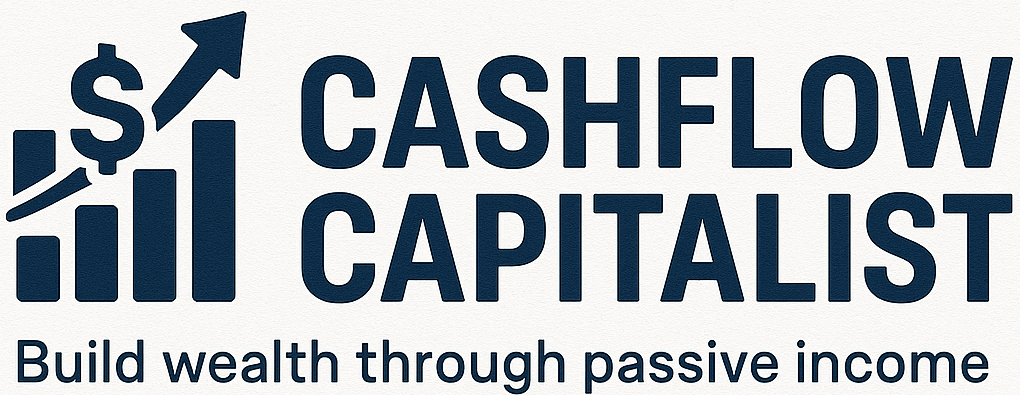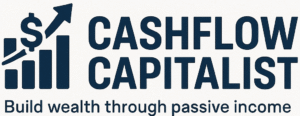The Power of Dividend Reinvestment Plans (DRIPs): How to Accelerate Wealth Through Compound Growth
Want to turn small dividend payments into a powerful wealth engine?

Dividend Reinvestment Plans (DRIPs) are a secret to building wealth in Canada. They use compounding to grow your money over time. This way, you can become a millionaire without even noticing.
Reinvesting dividends is a simple way to grow your wealth. It lets you buy more shares with your dividends. This starts a cycle of growth that gets bigger and bigger. To learn more about smart ways to reinvest your passive income, visit our guide on reinvesting passive income.
Key Takeaways
- Automated reinvestment of dividends to boost portfolio growth.
- Compound growth accelerates wealth accumulation over time.
- No brokerage fees on reinvested dividends.
- Canadian companies like Royal Bank of Canada and Enbridge Inc. offer strong DRIP programs.
- Tax considerations: Reinvested dividends are considered taxable income.
The Wealth-Building Magic of Compound Growth
Understanding compound growth is key to growing your wealth fast. Investing in dividend stocks can bring in big returns. When you reinvest those dividends, your money grows faster and faster.
How Compounding Creates Exponential Returns
Compounding makes your investments grow really fast. When you reinvest dividends, you earn returns on your returns. This creates a cycle of growth that can make you very wealthy over time.
For example, if you start with $1,000 in a stock with a 5% dividend, you’ll earn $50 in the first year. Reinvesting those dividends means you’ll earn returns on $1,050 the next year. This leads to even more dividends in the years that follow.
The Time Value of Reinvested Dividends
Reinvested dividends are key to compounding. By putting dividends back into the market, you buy more shares. This means you get more dividends in the future.
This shows the importance of time in investing. Starting early and being consistent can lead to huge returns. For more on investing, check out this guide on long-term wealth investing.

| Year | Investment | Dividend Yield | Total Value |
|---|---|---|---|
| 1 | $1,000 | 5% | $1,050 |
| 2 | $1,050 | 5% | $1,102.50 |
| 3 | $1,102.50 | 5% | $1,157.63 |
Understanding Dividend Reinvestment Plans (DRIPs)
Dividend Reinvestment Plans (DRIPs) are great for growing your money over time. They work by using your dividends to buy more shares. This makes your investment grow without you having to do anything.

What Are DRIPs and How They Work
A DRIP is a service that lets you automatically buy more shares with your dividends. It’s offered by companies or stock brokers. This way, you can grow your money without having to do it yourself.
Key benefits of DRIPs include:
- Automatic reinvestment of dividends, reducing the need for manual intervention
- Potential for lower costs due to reduced or eliminated commission fees
- Dollar-cost averaging, as dividends are reinvested regardless of market conditions
As Warren Buffett once said, “Price is what you pay. Value is what you get.” DRIPs help investors get more value by using compounding.
Types of DRIPs Available to Canadian Investors
Canadian investors can choose from different DRIPs. Each has its own benefits and features.
The main types of DRIPs include:
- Company-operated DRIPs: These are managed by the company itself. You can sign up through the company’s transfer agent.
- Broker-operated DRIPs: Brokerages also offer DRIPs. They let you reinvest dividends from different stocks in your account.
- Third-party-operated DRIPs: Some third-party providers offer DRIP services. They let you manage many DRIPs in one place.
A recent financial analysis found that DRIPs are key for long-term investors. They help build wealth in a disciplined way.
The Financial Advantages of DRIPs
DRIPs offer many benefits, making it easier and cheaper to grow your investments. They help you save money and make your investment strategy stronger.
Cost Savings: Reduced or Zero Commission Fees
One big plus of DRIPs is saving on commission fees. You can reinvest dividends with lower costs. Some companies even give you shares at a discount through their DRIP. This means you get more shares for your money.
Let’s look at how DRIPs can save you money compared to traditional investing:
| Investment Method | Commission Fees | Share Purchase |
|---|---|---|
| Traditional Investing | $10 per transaction | Full shares only |
| DRIP Investing | $0 – $5 per transaction | Fractional shares allowed |
Dollar-Cost Averaging Benefits
DRIPs also help with dollar-cost averaging. This means investing a set amount regularly, no matter the market. It helps smooth out market ups and downs. By reinvesting dividends, you’re dollar-cost averaging.
Fractional Share Purchases
DRIPs let you buy fractional shares. This means you can invest your entire dividend payment, not just part of it. For example, if your dividend is $100 and the share price is $50, you can buy 2 shares with $0 left over. With a DRIP, you can invest the full $100, even if it means buying 2.1 shares.
For more tips on building a strong investment portfolio, check out the best Canadian ETFs for TFSA and RRSP. Or learn about building a recession-proof wealth portfolio.

Setting Up Your DRIP Investment Strategy
Starting your dividend investing journey means setting up a DRIP strategy. This is key to maximizing your returns. A good DRIP strategy helps you reach your financial goals by using compound growth.
Evaluating Your Financial Goals and Timeline
Before starting your DRIP, think about your financial goals and timeline. Decide what you want to achieve and when you need the money. This will help you figure out how much to invest and how often.
If you’re saving for retirement, a long-term strategy might be best. Learn more about long-term plans in our guide on how to build $1000/month in passive income in just 12 months.
Step-by-Step DRIP Setup Process
Setting up a DRIP can be done through your brokerage or directly with the company. Here are the steps for both methods:
Through Your Brokerage
- Log in to your brokerage account and navigate to the DRIP section.
- Select the stocks you want to enroll in the DRIP.
- Agree to the terms and conditions of the DRIP.
- Confirm your enrollment.
Direct Company DRIPs
- Visit the investor relations page of the company’s website.
- Look for the DRIP enrollment section and fill out the required forms.
- Submit the necessary documents, such as proof of ownership and identification.
- Wait for the company to process your enrollment.
Common Setup Mistakes to Avoid
When setting up your DRIP, avoid common mistakes. Don’t overlook the terms and conditions, enroll in the wrong program, or neglect to check your account. Knowing these mistakes helps ensure a smooth setup.
Consider the fees associated with the DRIP, the dividend payment schedule, and regularly check your portfolio.
Top Canadian Stocks with Powerful DRIP Programs
Using Dividend Reinvestment Plans (DRIPs) with top Canadian stocks can boost your wealth. These stocks often have yields between 3% and 5%. This makes them great for long-term investing.
Companies like Rio Tinto and BHP have DRIPs with high dividend yields. By putting dividends back into these programs, you can grow your shares over time. This way, you benefit from compound growth. For example, investing in Canadian dividend stocks can be a smart move for earning passive income.
To start, look into DRIP programs with Canadian stocks. Visit Cash Flow Capitalist to learn about passive income and using DRIPs for long-term investing.
Choosing the right Canadian stocks with strong DRIP programs can help you build a solid investment plan. This plan uses dividend reinvestment to grow your wealth.
FAQ
What is a Dividend Reinvestment Plan (DRIP)?
A Dividend Reinvestment Plan (DRIP) lets investors put their dividend payments into more shares. This helps grow their wealth over time.
How do DRIPs work?
DRIPs automatically turn dividend payments into more shares. This can be done through a company, broker, or third party. It makes investing easier and can save money.
What are the benefits of using a DRIP?
Using a DRIP can save you money on fees. It also helps you buy fractional shares and grow your wealth over time.
Can I set up a DRIP for any stock?
Not all stocks have DRIPs. Availability depends on the company and your broker. Check with them to see if a DRIP is available for a stock.
How do I set up a DRIP?
Setting up a DRIP involves a few steps. First, decide on your financial goals. Then, choose the DRIP option and set it up. This can be done through a broker or directly with the company.
Are there any tax implications for DRIPs?
Yes, DRIPs have tax implications. Reinvested dividends are considered taxable income. You must report this income on your taxes, even if you reinvest it.
Can I use a DRIP in a Tax-Free Savings Account (TFSA) or Registered Retirement Savings Plan (RRSP)?
Yes, you can use a DRIP in a TFSA or RRSP. This helps your investments grow while keeping the tax benefits of these accounts.
How do I track my DRIP investments?
You can track your DRIP investments by checking your account statements. You can also use a dividend tracker or online tools from your broker or the company.




